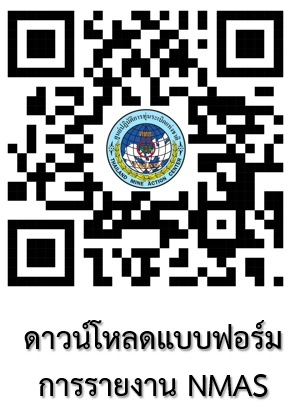Landmines are subtle and much misunderstood weapons. Traditionally they are a means of transforming the terrain to the defender's advantage, rather than providing a definitive barrier. They can inflict casualties but must be covered by fire. They shape the attacker's posture, but do not define the outcome of the battle. They provide economies in defense while imposing attrition on the attacker. They are laid without relish and contemplated with fear. They are simple to lay but remarkably difficult to remove. They are not activated unless an attacker advances, but they do not recognize cease-fires. (Croll, 1998)
This chapter provides a general overview of current U.S. landmine systems, the doctrinal guidance for their use, the capabilities of U.S. APL, and the technologies of current APL. Although this study addresses alternatives to APL, considerable information relating to AT mines is included because APL are often used together with AT mines or in mixed systems that include AT mines. Appendix C provides descriptions of both APL and pertinent AT mines.
DOCTRINAL GUIDANCE FOR USING LANDMINES
The Army, as DOD's executive agent for landmine warfare, is responsible for the doctrine for the use of mines. The Army is also responsible for coordinating these activities with the Marine Corps, Navy, and Air Force. According to doctrine prescribed by the Office of the Joint Chiefs of Staff, landmines are only one component in the overall strategy for constructing barriers and complex obstacles (JCS, 1999). Box 3-1 lists the advantages and disadvantages of using barriers, obstacles, and landmines.
Obstacles can be features of the terrain that impede the mobility of a force. Some obstacles, such as mountains, rivers, railway embankments, and urban areas, exist before the onset of military operations. Military forces create other obstacles to support their operations. Commanders use these obstacles to support their scheme of maneuver. When integrated with maneuver and weapon fire, obstacles can be decisive on the battlefield. Doctrine for some obstacles that rely on a physical object to impede vehicles or dismounted soldiers, such as antitank ditches, wire, road craters, and many types of roadblocks, has not changed since World War II. Because these obstacles do not damage or destroy equipment, or injure or kill soldiers, they are considered to be passive.
Although minefields are also obstacles, they are not passive, and doctrine for mine warfare has changed significantly. Today's mines are different from the mines of the World War II era, which required physical contact and relied on blast effects. Today's mines are triggered not only by pressure, but also by seismic, magnetic, or other advanced fuzes. Mines that self-destruct at preset times give commanders control over how long they remain obstacles. The invention of programmable mines that can recognize and
|
BOX 3-1 Barriers, Obstacles, and Mines Advantages
Disadvantages
|
ROLE OF LANDMINES IN WARFARE
From a theoretical point of view, several “principles of war” underpin land combat operations. Landmines could be considered appropriate weapons in the execution of all of these principles but figure most often in the following four: economy of force (using all combat power available as effectively as possible; allocating minimum essential combat power to secondary efforts); security (never permitting the enemy to acquire an unexpected advantage); offense (seizing, retaining and exploiting the initiative); and maneuver (placing the enemy in a position of disadvantage through the flexible application of combat power). The use of landmines is scenario dependent and involves trade-offs among the principles of war (U.S. Army, 1993).
On the one hand, mines can contribute to the U.S. military's economy of force and security roles in certain defensive scenarios, especially in sectors that are less important and have been allocated fewer forces and weapons. No doubt, given sufficient forces, it would be more advantageous to have no economy of force sectors in a defensive fight. However, force-multiplier and economy-of-force capabilities are usually necessary. Economy of force does not mean that minefields are unobserved, it just means that the preponderance of combat power is concentrated in another sector of the battlefield, and the economy-of-force sector has to make do with less. APL help defenders do just that.
On the other hand, it is generally accepted that wars are won by attacking the enemy. Mines can play a significant role in causing an enemy to move in directions that are advantageous to friendly forces, allowing them to kill the enemy more efficiently. In some offensive operations, however, U.S. mines previously emplaced during defensive missions that cannot distinguish friend from foe could hinder the execution of rapid offensive maneuvers.
In this report, the committee adopted a long-term view of landmines that took into account the principles of war and a wide range of scenarios, from major theater wars to peace operations. Although this report is focused on the characteristics of APL, APL are only one part of an integrated set of battlefield operating systems designed to give U.S. forces a superior means of fighting and winning an engagement (Bornhoft, 1999). These battlefield operating systems require constant coordination to ensure synergy among intelligence, maneuver, mobility/survivability, fire support, air defense, combat service support, and command and control systems.
The 1998 edition of Field Manual 20-32 (U.S. Army, 1998b) is the principal U.S. doctrinal basis for the use of minefields; and the 2000 edition of Field Manual 3-34.2 (U.S. Army, 2000) covers combined arms obstacle integration. Landmines can be used individually to reinforce nonexplosive obstacles or in groups known as minefields (or mined areas in the CCW). A minefield can contain a single type of mine or a combination of types (i.e., APL and AT mines). According to FM 20-32, minefields are used for the following purposes:
- Produce a vulnerability on enemy maneuver that can be exploited by friendly forces.
- Cause the enemy to break up his forces.
- Interfere with enemy command and control.
- Inflict damage on enemy personnel and equipment.
- Exploit the capabilities of other weapon systems by delaying enemy forces in an engagement area.
- Protect friendly forces from enemy maneuver and infiltration.
There are four basic types of minefields. Protective minefields are used to protect soldiers, equipment, supplies, and facilities from enemy attacks or other threats. Tactical minefields directly limit the enemy's movements in a way that gives the defending force a positional advantage. Tactical minefields are designed, sited, and integrated with supporting weapons to produce four tactical effects: disrupting, diverting, fixing, and blocking an enemy. Nuisance minefields (another form of tactical minefield) cause enemy forces to move cautiously, thus disrupting, delaying, and sometimes weakening or destroying follow-on forces. Phony minefields are used as decoys to deceive the enemy about the exact location of real minefields.
CAPABILITIES OF ANTIPERSONNEL LANDMINES
The committee thought it important to describe the specific capabilities APL bring to a battlefield. A complete treatment of the capabilities, effectiveness, and challenges of APL is beyond the scope of this report, but this synopsis will provide a helpful context for the reader trying to understand this complex issue.
Today's nonself-destructing mines are simple, reliable, low-cost weapons that can operate in all weather conditions, provide deterrence through fear, and can physically delay or kill the enemy. However, they cannot distinguish between friends, foes, and noncombatants, and if they remain active long after the end of hostilities, they can and do kill innocent noncombatants. For these reasons, the U.S. plans to use mines with self-destructing and self-deactivating capabilities that reduce residual explosive hazards on battlefields. The capabilities of APL listed in Box 3-2 were described to the committee during introductory briefings.
Psychological Effects
Among all of the frightening elements on a battlefield, landmines appear to have a unique ability to inspire fear. In a unique study, The Psychological Effects of Anti-Personnel
Source : https://www.nap.edu/read/10071/chapter/5#26



















